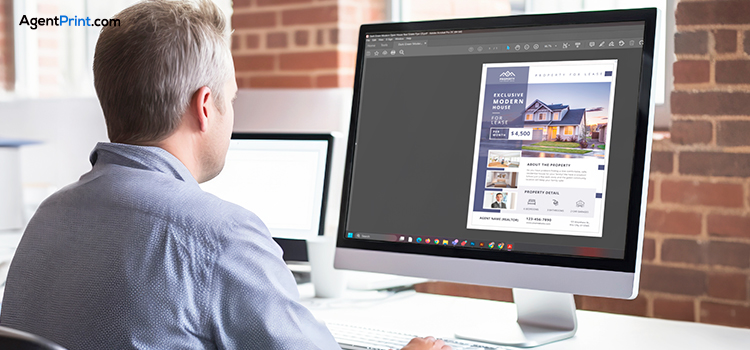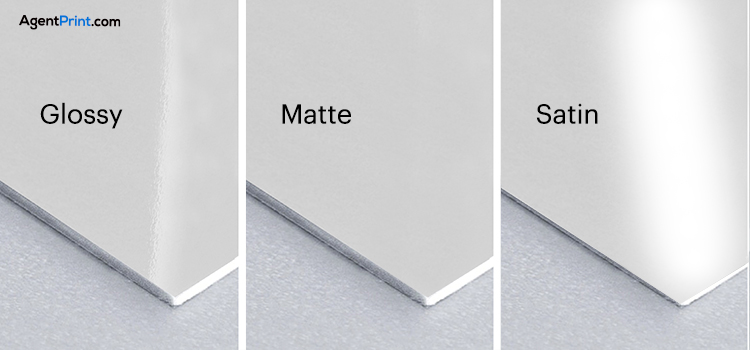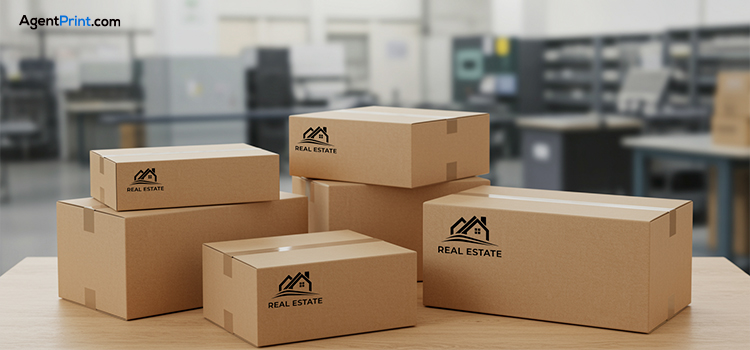Once your real estate marketing campaign has begun and you have determined what types of print marketing materials you require, it is time to present a list of your needs to the print provider. The precise turnaround time and comprehensive pricing for each project should be provided to you when communicating with your print provider. You can achieve the best outcomes by following a few crucial guidelines for effective communication with the supplier.
This blog post walks you through a few easy yet crucial steps to improve the entire printing process through mutual collaboration. Our goal is to assist real estate agents in making well-informed and competent decisions. Let’s check the best ways to communicate with your print provider company.
Read More: Top Real Estate Print Marketing Materials Every Agent Needs in 2025
Why Clear Communication Saves You Time and Money
Maintaining open lines of communication with your print partner is essential for reducing errors, expediting processes, and minimizing expenses. A more efficient and economical print process results from reduced revisions, quicker turnaround times, and mutual understanding of the project requirements, which are ensured by effective communication.
A print partner who is aware of your requirements can take charge of the project, handling every facet of production and saving you time and money. The production process is more effective and produces faster turnaround times when everyone involved understands the project requirements. This is especially important for projects with tight deadlines.
What Details Should You Always Share With Your Printer?

Clarifying every detail regarding the design, file format, paper type, precise finishes, and likely costs is advised to prevent future issues. We will explain further details about the most crucial information every real estate agent needs to share with the print provider to ensure that the entire process runs perfectly.
File Preparation
Make sure you provide the appropriate file format, resolution, and colour mode when preparing design files for a print partner. Generally, the ability of PDFs to maintain formatting and guarantee system compatibility makes them the standard.
For logos, illustrations, and other graphics that might need to be resized for various print products, EPS (Encapsulated PostScript) is perfect. JPEGs are a popular format and work with the majority of drawing and design programs. For more professional images where detail is crucial, we frequently use TIFF files, which are renowned for their excellent quality.
Colour mode

When sharing your files with your print partner, you should use the CMYK colour mode for designs that are intended for printing. Cyan, magenta, yellow, and key/black, or CMYK, is the standard colour model used in the printing industry. The purpose of CMYK is to accurately depict colours in ink-based printing.
The colours you see on your screen will be more similar to the colours that will be produced when printed if you use CMYK. However, the colour mode used for digital screens and displays is RGB (Red, Green, Blue). The colours might not print as you would have hoped if you designed in RGB and then converted to CMYK.
Read More: The Science of Colours: What Works Best for Real Estate Print Marketing?
Proper Size for Cuts and Borders
The standard size for various print materials is different. For example, business cards are definitely different from real estate flyers or brochures. Each of them has its own safety zone for printing. It means you should be completely aware of the simple concept of print designs, including trim lines, safe zones, and bleed lines.
To avoid white edges when the paper is cut, use bleeding to extend your design past the trim edge. Where the paper should be trimmed is indicated by crop marks. Important text and images are protected from being cut off by safety zones, which make sure they are positioned within a safe margin from the trim edge. Double-check these specifications with your print partner at first.
Paper type and finish

Talk about the desired paper weight, finish, brightness, and level of transparency with your print partner. You should also be clear about the type of paper and its intended use. Whether you want it coated on one side or both sides should also be specified.
You can choose between glossy, matte, or satin finishes for your real estate print materials. While matte papers have a non-reflective finish that is ideal for better readability, glossy finishes are great for highlighting vibrant colours. Satin papers are best for representing high-end qualities and brand identity. You should also determine the paper’s weight, which is commonly expressed in pounds (lbs) or grams per square meter (gsm). Check the availability of each feature in advance.
Read More: The Ultimate Guide to Business Card Finishes for Real Estate Agents
Quantity and delivery date

It’s critical to be explicit about the number of items required and the delivery date when speaking with your print partner. This guarantees the suppliers’ reliability to provide an accurate cost estimate, distribute resources, and fulfill your deadline. Don’t forget to include any special delivery instructions you need and the delivery address.
If the order is urgent, make sure to express the urgency and the earliest date of delivery that is acceptable. The name and contact details of the person receiving the delivery should be included.
Questions Realtors Should Ask Their Print Provider Before Printing
We created a list of crucial questions real estate agents should ask when beginning to order their print materials to improve the print process. Remember to ask the following questions:
- Do you have any prior experience working for real estate brokerages?
- Could you provide me with some examples of your prior print products on real estate marketing projects? Ask for testimonials!
- How much do the materials I require cost per print? Are there any setup fees or other hidden costs?
- Are there any options for customization available?
- Do you have access to a design team for consultation?
- Will you be able to meet my deadline?
- What is your shipping and delivery policy?
- Do you have customer support? What if there is a problem with my order?
Asking these questions will help both sides of the project to be sure about the basic requirements and instructions. This will also help the real estate agents to analyze the reliability of the print partner.
When to Call and When to Email?

You’d better find the best method to contact the printing company. First of all, find a valid, credible company that has experience working with real estate agents before. Then, if you have any specific needs or concerns, call them before placing your order to ask all of your questions about their services, print quality, or turnaround times.
Emails work well for less urgent questions or for giving detailed information, but calling is typically faster for complicated or urgent issues. After placing an order, get in touch with them to discuss any concerns regarding the received item, order updates, or shipping details.
What to Say When You Need a Reprint or Change Without Confusion?
If your order contains any errors, such as a delayed delivery or a design flaw, or if you require a reprint due to a modification in your design or information, take professional action. Avoid using ambiguous words; be specific about the error and how it should be fixed. The result of the print product will directly affect your marketing goals and professional identity.
The printer can quickly grasp the significance and urgency of your request if you provide a thorough explanation of your need or modification. Don’t lose your temper or speak rudely! Keep your emails and phone conversations professional but friendly. Make sure the printer understands your request by having them double-check the changes.
Final Words
Finding a reliable print business with experience working with real estate agents, such as AgentPrint.com, is essential when you want to begin a print order. Your communication style and the initial questions you pose to the printing company demonstrate your level of concern and knowledge.
There are several concepts about quality, quantity, paper type, finishes, delivery, and file formats that you must exactly explain to them before finalizing your order. However, the clarity and quality of the final product depend on how you and your print partner communicate. Real estate agents can consult with a team of print specialists provided by AgentPrint to ensure the best possible final print materials.
